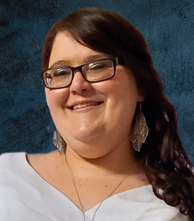Do you know if your patients understand the informational materials that you give them? CyraCom can help health systems convert patient documents into simple English to increase comprehension and positive patient experiences and outcomes.
Over a quarter of Americans struggle with literacy: 42 million Americans cannot read and 50 million adult Americans can only read at 4th or 5th-grade reading levels.
Only a quarter of Americans feel comfortable reading and comprehending health information. When the research firm PRC conducted its National Health Survey of 1,000 Americans, it reported:
- 9.2% of adults seldom/never find spoken health information easy to understand
- 8.5% of adults always/nearly always need help reading health information
- 12.5% of adults seldom/never find written health information easy to understand
- 6.9% of adults are not at all confident filling out health forms
23.3% of surveyed Americans gave one or more of these responses. According to the PRC National Health Study, those with low literacy find it more difficult to access healthcare and achieve positive health outcomes than the general US adult population.
Compared to the average US population, the low literacy population has a higher proportion with:
- No health insurance
- Chronic depression, increased confusion, and memory loss
- Self-reported fair or poor physical and mental health
- Fair or poor health care services available (26%)
- Food insecurity (40%)
- Financial insecurity (45%)
- Unsafe neighborhoods (31%)
- No or limited preventative care
The PRC National Health Survey also found that men, Hispanics/Latinos, those with lower incomes, those with a high school education or less, and those who are unemployed or unable to work had the most issues with literacy.
Combating Reading Difficulties
CyraCom partnered with a leading health system to conduct a readability focus group where patients received consent forms written at a 10th-12th grade level. CyraCom translated the forms to a 5th-grade level and invited community members to participate in a group session to provide feedback on the new version’s readability and format.
The focus groups rated Document A (below) a 5 out of 10 in terms of readability and clarity, and they rated Document B an 8 out of 10. Overall, the new version improved its readability by 60%.
Read the comparison below:
|
DOCUMENT A: ORIGINAL VERSION (10TH-12TH GRADE READING LEVEL) |
DOCUMENT B: NEW VERSION (5TH GRADE READING LEVEL) |
| Direct visualization of the digestive tract, abdominal cavity, or lungs with a lighted instrument is referred to as an endoscopy. Your physician has advised you of your need to have this type of examination. The following information is presented to help you understand the reasons for, and possible risks of, these procedures. | In an endoscopy, they put a tool with a camera and a light down your throat. They do this so they can see the gut, the inside of your belly, or your lungs. Your doctor has told you that you need to have this kind of exam. We discuss this exam below. This is so you will know why we want to do this exam. We also discuss what the risks might be. |
| At the time of your examination, the inside lining of the digestive tract or lungs will be inspected thoroughly and possibly photographed. If an abnormality is seen or suspected, a small portion of tissue (biopsy) may be removed for microscopic study, or the lining may be brushed and washed with a solution which can be sent for special study for abnormal cells (cytology). Cultures can be obtained also to check for infection. | In the exam, they will look carefully at the inside lining of the gut or lungs. They may take photos of these areas. They may see something that is not normal or think there is something that is not normal. If so, they may cut out a small sample for study in the lab. Or they might brush the area and wash it with a liquid. Then they will take a sample of the liquid for a lab test to see if there are cells that are not normal (cytology). They can also take a sample called a culture, to check for infection. |
| Small growths can frequently be completely removed (polypectomy). Occasionally during the examination, a narrowed portion of the esophagus/intestine (stricture) will be stretched to a more normal size (dilation), to relieve a blockage. | They can cut out small clumps of abnormal cells, which is called a polypectomy. Sometimes in the exam, they will find a section of the inside of your throat or gut that has shrunk and is now too narrow. They may be able to stretch it out closer to normal size, and stop it from blocking the way. |
How Converting Your Patient Materials into Simpler English May Help Improve Health Outcomes
The Centers for Medicare and Medicaid Services (CMS) estimates that avoidable readmissions comprise $17 billion of the $26 billion spent on return patient visits.
A review of 10.7 million Medicare records identified medical misunderstanding and miscommunication as the main driver of unnecessary readmissions. The top five reasons a patient may be readmitted are:
- Patients may not fully understand their diagnosis.
- Patients may be confused over which medications to take and when.
- Hospitals don’t provide patients or doctors with important information or test results.
- Patients do not schedule a follow-up appointment with their doctor.
- Family members lack the proper knowledge to provide adequate care.
Translating patient documents into a language or reading level that they and their family members can better understand may result in improved patient understanding, communication, and lower readmission rates.
Want more information about how CyraCom can help convert your materials into simpler English?
Email us at translations@cyracom.com or contact our team at getstarted@cyracom.com for more information about remote interpreting and other language services offered by CyraCom.











